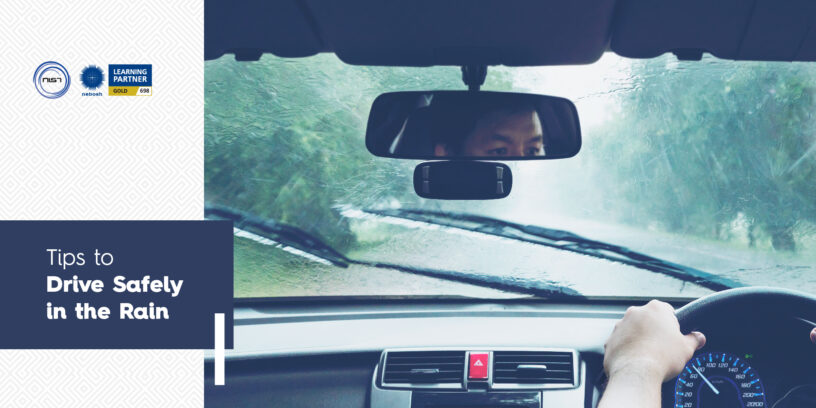It is a well-known statistic that rain plays a role in about half of weather-related vehicle accidents. They cause the roadways to become wet and can even result in potholes on poor roads, whether it be a small sprinkle or a severe rainfall accompanied by mild to high gusts. It can be challenging and nerve-wracking to drive in these conditions because vision is frequently reduced and one must rely on the windshield’s rain-spattered view for direction. Given how easily accidents can occur, this is understandable. The risk of driving in bad weather can be significantly decreased, though, by using our driving tips below:
1. Maintain Clear & Clean Windows
Driving safely is always based on having good vision, but it is especially important when visibility is already reduced by rain. To gain more visibility while driving:
- Regularly clean the windows on the inside and outside to get rid of dirt, dust, mud, smoke, fingerprints, grime, and other things.
- Turn on the air conditioning or cold air in the car and direct the vents at the windows if your windows fog up. If you need more ventilation, turn on the rear defroster and open the windows.
2. Keep Your Lights Working
If you’ve never adjusted your headlights properly, have your vehicle serviced. By doing this, you can make sure your headlights are pointed in the appropriate direction, see better, and avoid blinding other drivers.
- Ensure that all of your lights are functioning properly on a regular basis, and replace any that have burned out. This comprises the lights that are used for running, turning, and braking.
- Keep your car’s light covers clean to prevent dust and grime from decreasing their effectiveness.
3. Maintain your Tyres
Driving on bald tyres is extremely risky since tyre tread causes your tyres to stick to the road. In wet weather circumstances, you might easily hydroplane, slide, and skid if your vehicle lacks adequate traction.
- Most countries have imposed a 1.6mm minimum tread depth regulation, requiring drivers to change a tyre when it reaches that depth. It is advised that a tyre be replaced when any area of the tread is at 1.6mm depth.
4. Be Mindful
At times, we may drive paying little attention to the road. However, when driving in the rain, it is advisable to pay close attention to the road and passing vehicles, and to keep both hands firmly on the steering wheel for greater control. This is especially useful when heavy winds are blowing, as their force might cause your car to move.
5. Never brake or turn the wheels during a hydroplane
If your car has begun to hydroplane, you must avoid moving your wheels or braking, as this can cause a skid or spin. The best approach is to take your foot off the pedal and try to keep the vehicle straight until it regains traction. If you must brake, always do it gently.
Defensive Driving Training @ NIST Global
If your industry involves vehicle operators or even for the individual benefit of learning safe driving skills, you can opt for an exclusive Defensive Driving Training for your employees. NIST Global has delivered innumerable Defensive Driving Training sessions PAN India for both small scale & Giant Industries.
For further details about Defensive Driving Training, kindly contact our client servicing team @ +91 8754465588 / info@nistglobal.com














Leave a Reply